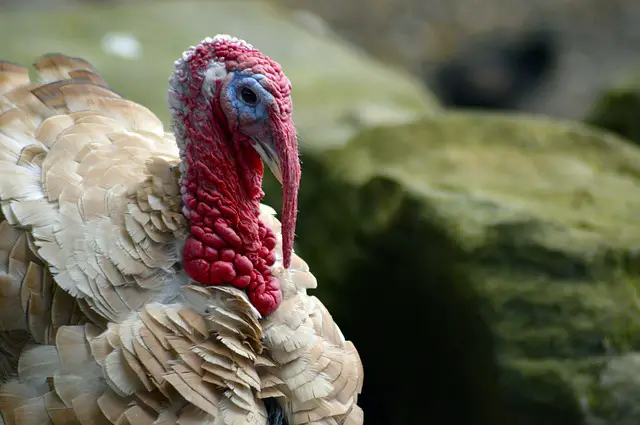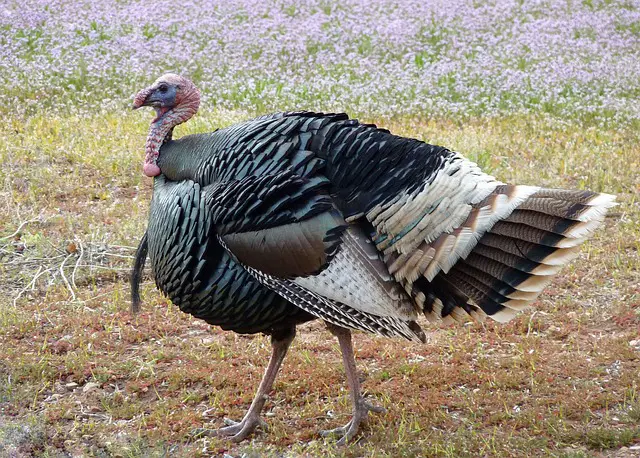They will soon grace platters and be smothered in gravy, but why don’t we give the turkey some love before that happens. Here’s some facts about the bird that will eventually slow your reflexes.
Turkey Facts
1. There are some distinct differences between the wild turkey and the domesticated one that we’re used to enjoying. Domesticated turkeys can’t fly and can’t run that fast while wild turkeys can fly and run at a pretty good clip. The domesticated turkey has a greater percentage of breast meat and weigh almost twice as much as their wild brethren. They are also much more noisy and are bred with white feathers as opposed to the dark feathers of a wild turkey so their skin isn’t discolored.
2. Male turkeys are called gobblers, from the gobble-gobble sound they make when calling to female turkeys, also known as hens. Female turkeys don’t gobble.
3. The wild turkey almost went extinct due to over-hunting by the early parts of the 1900s. The population of the birds went as low as 30,000. Today, due to restoration programs, their numbers are up to around 7 million.
4. Turkeys can fly at speeds up to 55 miles per hour and can run close to 25 miles per hour. (The domesticated turkey can’t do these things)
5. You can tell the gender of a turkey from its poop. Males leave poop in the shape of a “J” and females leave their poop in a spiral shape. The variations come about because of internal anatomy differences between males and females. A primitive sex organ in that anatomical area that is in male turkeys and other birds may also influence the shape for males.
6. Turkeys sleep in trees; their preferred spot. This keeps them safe from predators, and they will many times sleep as a flock. When they need to get down, the turkeys will call out to each other to ensure the coast is clear and that everyone is safe.
 7. Both genders of turkeys have something called a snood, which is the thing that hangs from their face. They also have a wattle, which is the thing that hangs under their chin. A study from the Journal of Avian Biology found that longer snoods of male turkeys were preferred by female turkeys.
7. Both genders of turkeys have something called a snood, which is the thing that hangs from their face. They also have a wattle, which is the thing that hangs under their chin. A study from the Journal of Avian Biology found that longer snoods of male turkeys were preferred by female turkeys.
8. Turkeys have periscopic vision since their eyes are on each side of their head. That means the birds can see things that aren’t directly in their line of sight. By turning their heads, turkeys can see 360 degrees.
9. Of course the sense of lethargy after downing a helping of turkey is blamed on tryptophan, the amino acid used to make serotonin which aids in regulating sleep, but tryptophan is found in all meat foods. The thing that may be aiding it in the sense of drowsiness is the amount of carbohydrates that are consumed with the turkey (especially during holidays). This carbo-loading stimulates an insulin release which helps regulate glucose levels and the uptake of amino acids, but tryptophan isn’t included. This gives the amino acid a better chance to produce serotonin which gives you the sleepy feeling.
10. Approximately 46 million turkeys are eaten at Thanksgiving. Thanks turkeys.
Sources: Smithsonian, Live Science, NPR, Eat Turkey, Bird Watching


